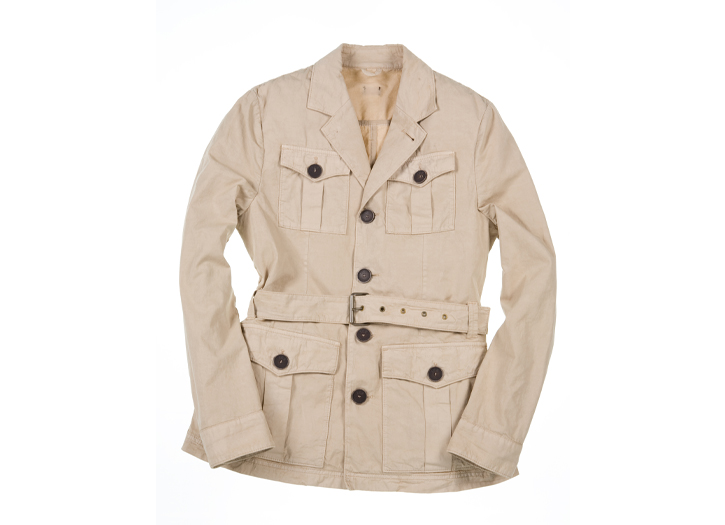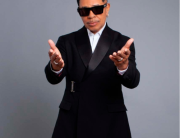A safari jacket or bush jacket is a garment originally designed for the purpose of going on safari in the African bush. When paired with trousers or shorts, it becomes a safari suit.
A safari jacket is commonly a lightweight cotton drill or lighter poplin jacket, traditionally khaki in color, with a self-belt, epaulets, four or more expandable bellows pockets and often with cartridge loops. Lightweight, light-coloured uniforms were worn by European soldiers serving in warm climates from the 19th century and, little altered, throughout World War II. They typically featured epaulettes, pleated pockets, belts and other features later found on safari jackets.
The safari suit is popularly associated with Australian fashion in the 1970s. It was commonly worn by the former South Australian Premier Don Dunstan.On 7 March 1974, male politicians in the Northern Territory were given permission by the Speaker of the House Les MacFarlane to wear safari suits during sittings of the Northern Territory Legislative Assembly. It was granted at the request of the Leader of the Opposition, Mr Jon Isaacs. Honourable members, I have received a further request that the standard of male dress be relaxed to include safari jackets. I have been in touch with the federal parliament and I find that the Speaker, Sir Billy Snedden, is allowing safari jackets with shirt and tie. He also allows one member to wear a safari jacket over an open-necked shirt. Therefore, I have decided to accept safari jackets as suitable dress in the Assembly.
In India, the safari suit gained popularity through the 1970s influenced to a large degree by films (James Bond/Roger Moore) and some fashions trends from the west for warmer climates. The safari suit in India gained prominence when local synthetic fibre manufacture and supply was significantly increased in the later half of the 1970s.Reliance Industries and other textile manufactures set up synthetic fibre plants in India significantly reducing the price of synthetic fibre and the Indian middle class jumped at the opportunity to be well dressed in a fabric which, though unsuited to India’s climate was fairly cheap, easy to maintain and long-lasting.
The safari suit continued to be the de facto business attire, particularly in government/public sectors and the SMB arena in India, through the late-1990s. With India’s growth over the 1990s, liberalization and with the middle class suddenly having more disposable income, the younger generations began to gravitate towards more modern western fashions such as suits and other business attire. Beginning in the mid 2010s, a variant of the bush jacket, known as a shirt jacket or shacket, underwent a revival in the UK and Europe due to the popularisation of vintage workwear by the hipster subculture.These were frequently made from blue denim, cambric, seersucker, heavy cotton in olive green or khaki, natural linen, or camouflage cloth, and featured patch pockets. Some had the epaulets, belt and pocket flaps of the traditional safari jacket, while others did not.







Add Comment
You must be logged in to post a comment.